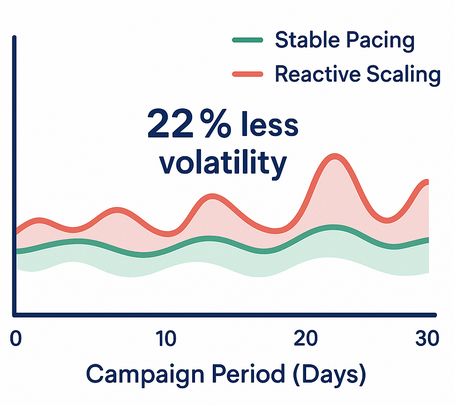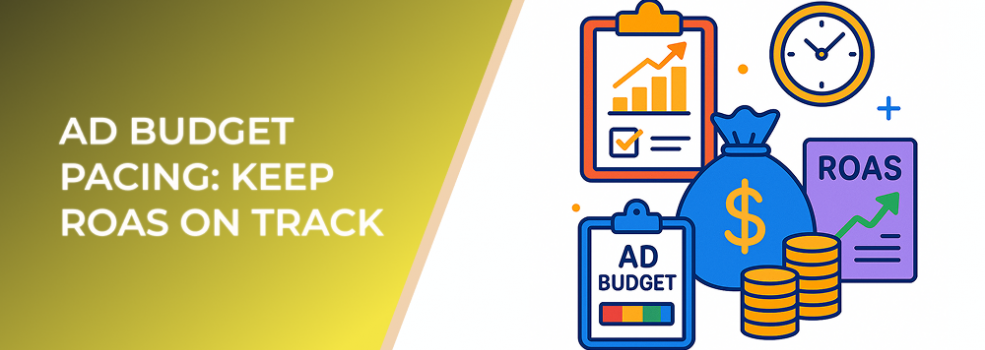Budget pacing is the practice of distributing your advertising spend evenly and strategically over the entire campaign period. Poor pacing can lead to overspending early, underspending late, and inconsistent ROAS.

Average ROAS for Google Ads: $2 in revenue for every $1 spent
According to recent industry benchmarks, advertisers who implement automated pacing strategies see up to 18% higher ROAS consistency across a 30-day cycle. Additionally, nearly 42% of digital marketers report losing performance due to unexpected mid-month overspending.
Common Signs of Poor Pacing
-
Large fluctuations in daily spend
-
High early-month burn rate
-
Difficulty scaling without losing efficiency
-
Inconsistent cost per acquisition
How to Keep ROAS Steady
1. Set Daily and Weekly Pacing Targets
Define your total budget and divide it into daily or weekly spend caps. This prevents accidental overspending driven by short-term performance spikes.
2. Use Signals from Real-Time Performance Data
A pacing strategy should adjust as the campaign evolves. For example, if conversion rates climb by 10–15% on weekends, allow budgets to shift while still respecting overall spending limits.
3. Monitor ROAS Variability

Stable budget pacing reduces ROAS volatility by up to 22%
Data shows that campaigns with stable pacing have up to 22% less ROAS volatility compared to campaigns that scale spend reactively. Track ROAS changes daily and correct pacing if volatility grows.
4. Allocate More Budget to High-Performing Segments
Reallocate spend to segments with the strongest conversion performance. Many advertisers observe a 28% ROAS lift when shifting 20% of budget into top-performing audiences.
5. Plan for Seasonal Demand Fluctuations
Seasonal spikes can throw pacing off. For example, Q4 ecommerce campaigns often see CPMs rise by 35–55%, requiring pacing adjustments to protect ROAS.
Practical Pacing Framework
-
Define campaign duration and total spend
-
Establish pacing benchmarks (daily or weekly)
-
Set guardrails for maximum allowed deviation
-
Re-evaluate performance trends every 48–72 hours
-
Reallocate spend based on revenue contribution
Final Thoughts
Strong pacing prevents wasted spend, stabilizes ROAS, and makes campaigns easier to optimize. A structured pacing strategy ensures that budget distribution follows performance trends instead of reacting to them.

